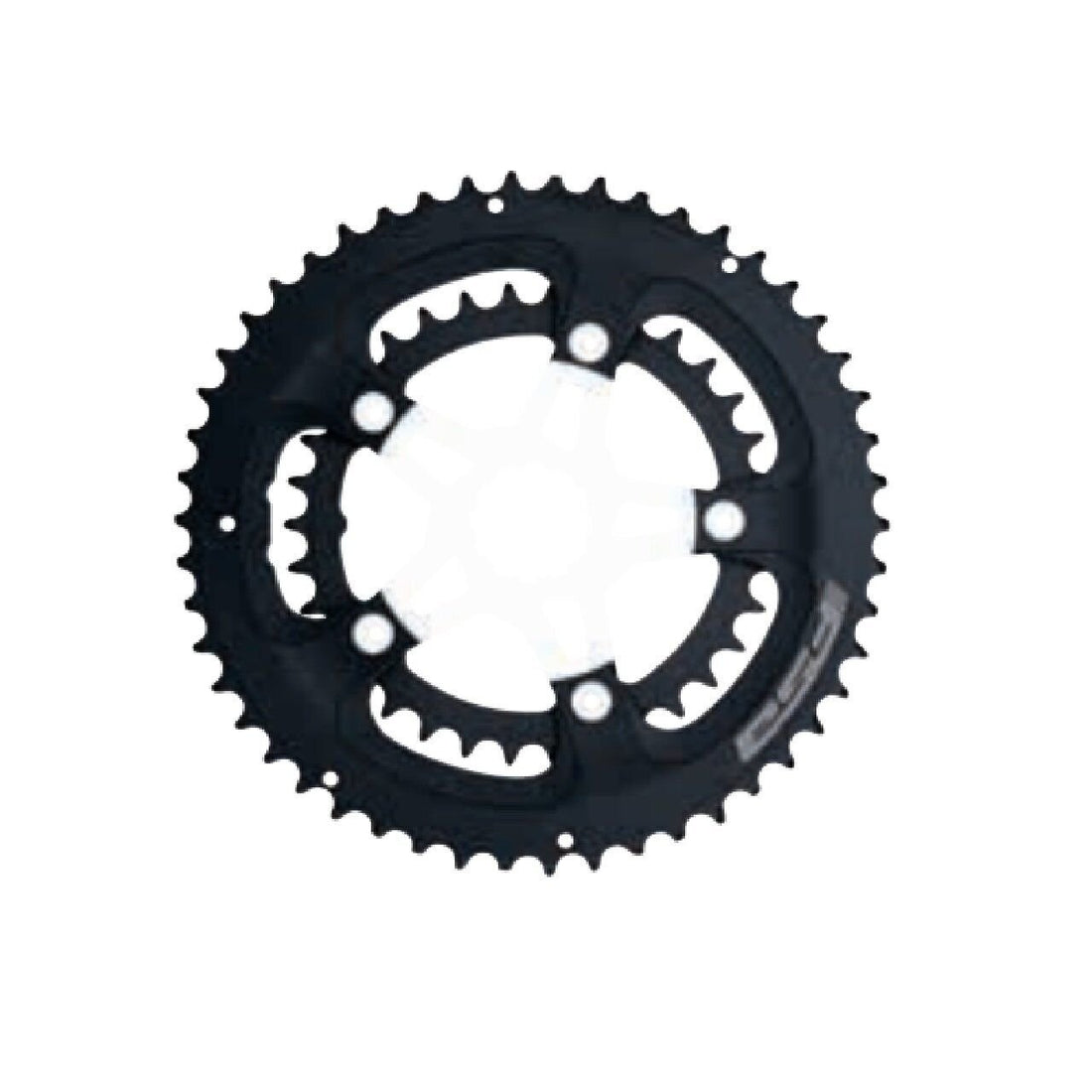
Chainring upgrade; What to look for
How to Determine the Right Size and Fit for a Bike Chainring Upgrade
Finding the Perfect Chainring for Your Ride
Upgrading or replacing a bike chainring can enhance your pedaling efficiency, optimize your gear range, and improve overall performance. But choosing the right size and fit requires understanding key factors like bolt circle diameter (BCD), tooth count, and compatibility with your crankset and drivetrain. Here’s how to make an informed decision.
1. Identify Your Chainring Bolt Circle Diameter (BCD)
The BCD is the diameter of the circle passing through the center of the chainring bolt holes. This measurement determines which chainrings will fit your crankset. To find your BCD:
• Check the markings on the existing chainring.
• Measure the distance between adjacent bolt holes and use a BCD chart.
• Look up your crankset model specifications online.
• Check all the holes, some are Symmetrical and some are Asymetrical
2. Choose the Right Tooth Count
The number of teeth on a chainring directly affects how efficiently you pedal and how well your bike performs across various terrains. It determines your gear ratios, influencing how hard or easy it is to push the pedals. Here’s what you need to consider when selecting the best tooth count for your riding style:
Understanding Gear Ratios and Cadence
• Lower tooth count (28T–34T): Offers easier pedaling, making it great for steep climbs, off-road trails, and endurance riding. You'll be able to spin the pedals faster (higher cadence) while exerting less force, helping maintain energy over long distances.
• Mid-range tooth count (36T–42T): A balanced setup for all-rounder cyclists who tackle a mix of climbs and flats. If you ride gravel or a combination of terrains, this may be a good compromise between speed and power.
• Higher tooth count (50T+): Ideal for road cyclists, time trialists, and racers who need maximum speed. These larger chainrings require more force per pedal stroke but help maintain a higher top-end speed on flatter terrain.
How to Choose Based on Riding Style
• Mountain Biking & Gravel Riding: Opt for a smaller chainring (30–34T) to maintain better control and efficiency over technical climbs.
• Road Racing & Fast Group Rides: Go for a larger chainring (50–53T) to optimize speed without excessive spinning.
• Commuting & Casual Cycling: Mid-range sizes (36–42T) offer flexibility, allowing you to cruise efficiently without feeling underpowered.
Additionally, some riders experiment with oval chainrings, designed to maximize power during the strongest part of your pedal stroke while reducing resistance when your legs are weakest. If knee discomfort or pedaling inefficiencies are concerns, consider an oval design for smoother power transfer.
________________________________________
3. Ensure Crankset and Drivetrain Compatibility
Not all chainrings fit all bikes! Before making a swap or upgrade, you must ensure compatibility with your crankset, drivetrain, and chainline to prevent shifting issues.
Crankset Compatibility
Your chainring needs to match the crankset’s mounting system. Different brands use proprietary designs, so check for:
• Direct Mount vs. Bolt-on: Some chainrings bolt onto the crank spider, while others attach directly to the crank arm.

• Note the number of arms: Some cranksets have zero arms (direct mount) and some have 5, and everything in between. Make sure the chainring your order matches the crankset.
• BCD Standards: Common sizes include 110mm, 130mm, 104mm, and others—each affects which chainrings will fit.
• Single vs. Double Chainrings: Some cranksets support multiple rings, while others (like 1x setups) work with only one ring.
Drivetrain Speed Considerations
Not all chainrings work across different speeds—ensure yours matches your cassette and derailleur setup:
• 8–10 Speed: Chainrings are slightly wider and have thicker teeth, compatible with older drivetrains.
• 11–12 Speed: Designed with narrow-wide tooth profiles for better chain retention and smoother shifting.
• 13-Speed or Electronic Groupsets: Specialized chainrings exist for these setups, often with optimized shifting ramps.
Chainline & Frame Clearance
Your chainring’s position relative to the cassette must be correct to maintain smooth chain movement. If your chainring is too far inward or outward, shifting can feel sluggish or lead to premature wear. Consider:
• Frame clearance for larger chainrings.
• Whether boost/non-boost spacing affects chainline adjustments.
• Chainstay clearance to avoid interference with the frame geometry.
By understanding these factors, you can ensure that your chainring upgrade fits seamlessly with your bike’s drivetrain, providing the best possible performance and longevity.
4. Consider Chainring Material and Design
Chainrings come in aluminum, steel, and titanium materials, each affecting durability and weight. Additionally, some feature narrow-wide tooth profiles to improve chain retention.
5. Think About Future Upgrades
If you’re planning to change gearing ratios or convert to a single-chainring setup, ensure your frame and drivetrain can accommodate the modifications.
By following these steps, you can find the ideal bike chainring size and fit, ensuring smooth performance and a customized ride.
